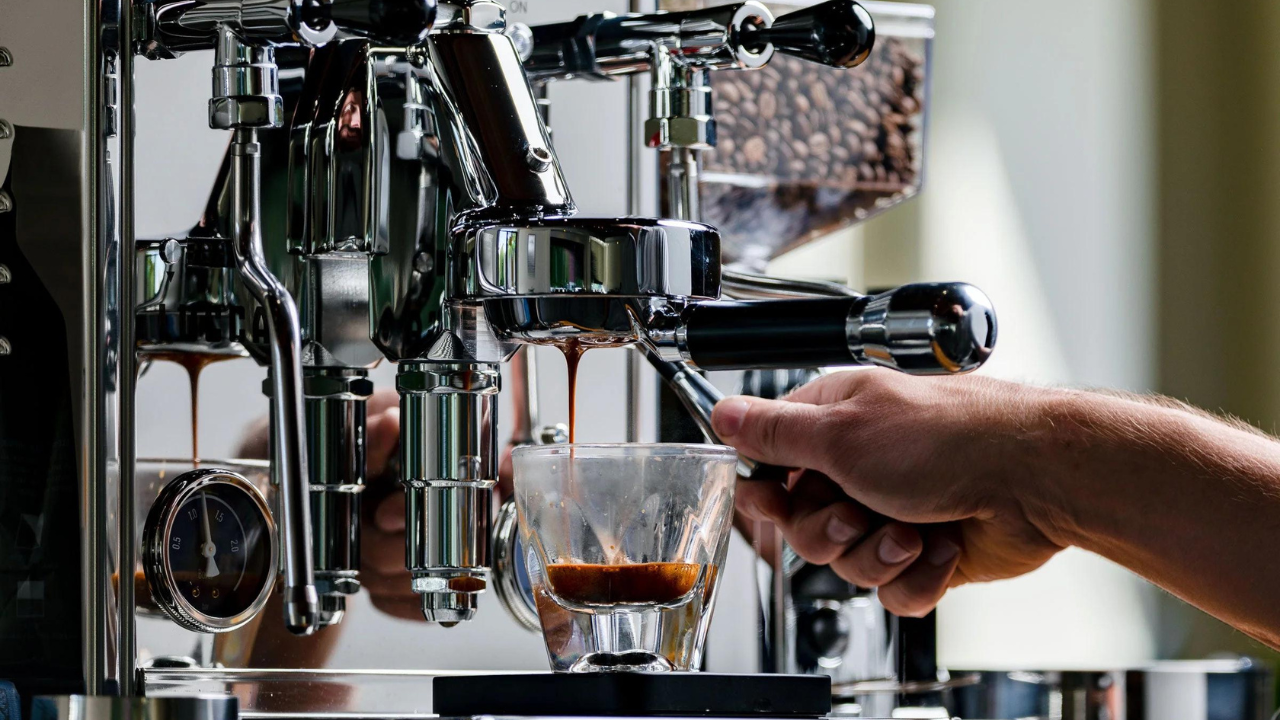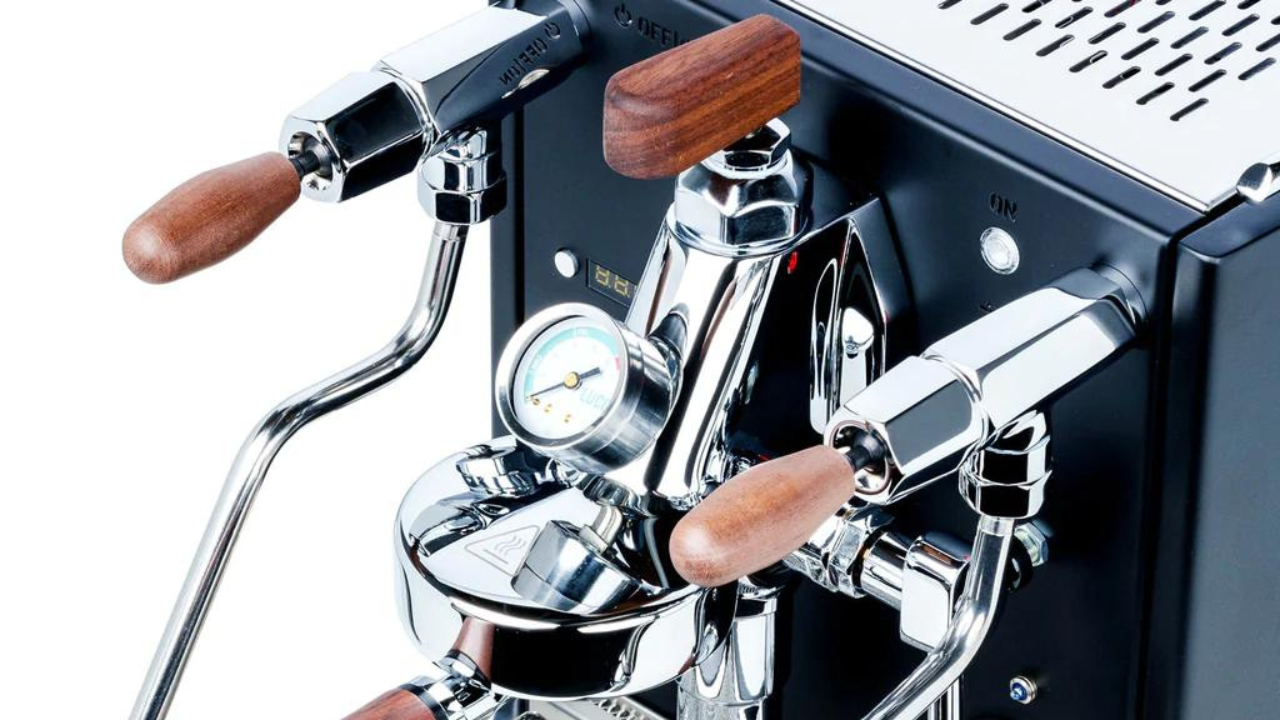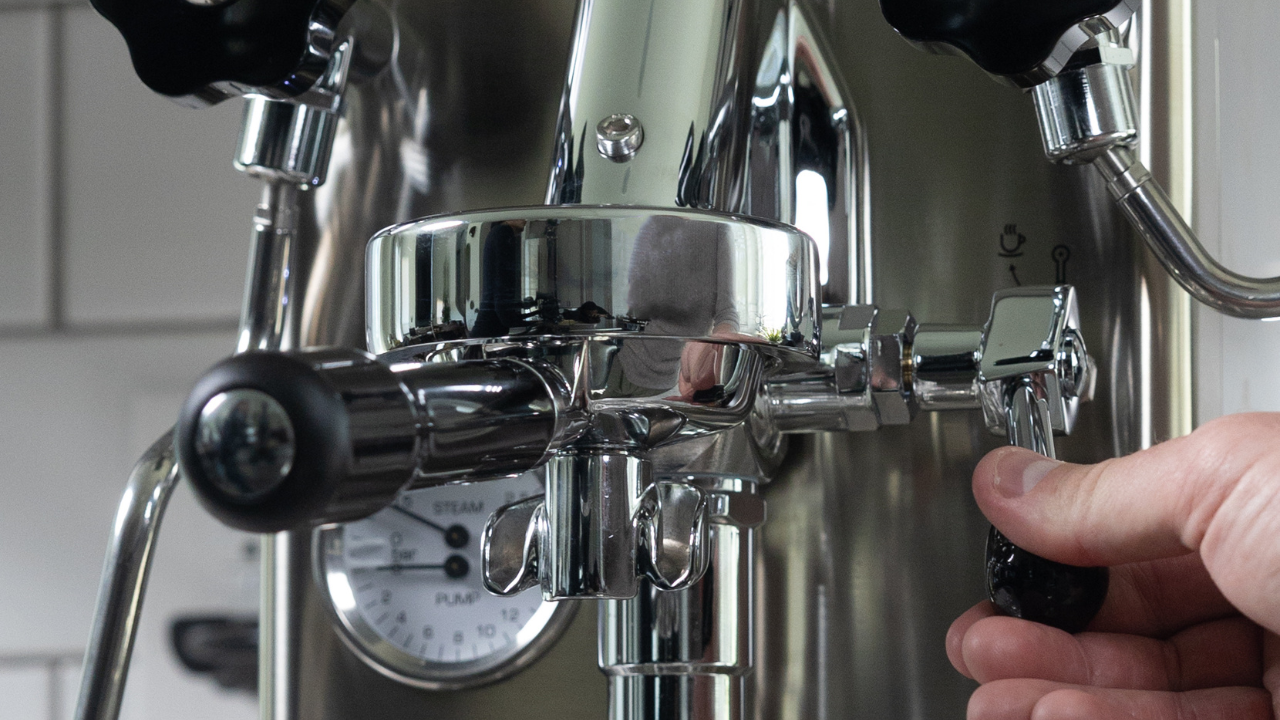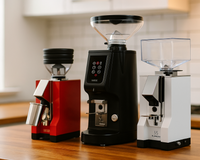The Heartbeat of Espresso: Unveiling the Magic of the E61 Group Head
Imagine this: It's early morning, and you're standing in your favorite local café, eagerly awaiting your daily dose of liquid motivation. As the barista expertly maneuvers behind the counter, you can't help but notice the symphony of sounds emanating from the espresso machine—a steady hum of machinery punctuated by the occasional hiss of steam and the satisfying thud of a tamper hitting the portafilter.
But amidst the hustle and bustle of the café, there's one component quietly working its magic, largely unnoticed by the casual observer: the E61 group head. As the beating heart of the espresso machine, this unassuming yet vital piece of equipment plays a pivotal role in delivering that perfect shot of espresso to your waiting cup.
YOU MIGHT LIKE: What is a portafilter?
Little do you know, as you sip your morning brew, that behind the scenes, the E61 group head is orchestrating a delicate dance of temperature regulation and water distribution, ensuring that each espresso extraction is as flawless and consistent as the last. It's a silent guardian of quality, tirelessly maintaining the integrity of your coffee experience with every pull of the lever.
Indeed, the next time you savor that rich, aromatic espresso, take a moment to appreciate the unsung hero behind the counter—the E61 group head—whose precision engineering and unwavering performance elevate your daily ritual from ordinary to extraordinary.

Why is the group head important?
The group head is the gateway to espresso perfection, serving as the pivotal interface between the espresso machine and the coffee grounds. Its significance lies in its role as the conductor of the brewing process, where water meets coffee to create the flavorful elixir we know and love.
Essentially, the group head acts as a bridge between the water source and the coffee grounds, allowing for controlled water flow and pressure during extraction. Its design directly influences crucial aspects of the brewing process, such as temperature stability, water distribution, and extraction consistency.
RELATED: Why your tap water might be the secret to better coffee
Temperature stability is paramount in espresso extraction, as even slight fluctuations can significantly impact the flavor profile of the final brew. The group head helps maintain a consistent brewing temperature, ensuring that each shot of espresso is extracted at optimal conditions for flavor development.
Furthermore, the group head plays a vital role in distributing water evenly over the coffee grounds, promoting uniform extraction and preventing channeling, where water bypasses the coffee puck, leading to uneven extraction and undesirable flavors.

Introducing the E61
The E61 group head quickly became the gold standard for espresso machines, setting a benchmark for temperature stability, water distribution, and extraction consistency that is still revered today. Its iconic design, characterized by a lever-operated system and thermal siphon, has become synonymous with quality and precision in the world of espresso.This groundbreaking design introduced several key features that remain fundamental to espresso brewing:
- Temperature Stability: The E61 group head incorporates a thermal siphon system that circulates hot water from the boiler through the group head and back, ensuring a consistently stable brewing temperature. This temperature stability is crucial for achieving optimal flavor extraction from the coffee grounds.
- Pre-Infusion: The lever-operated mechanism of the E61 group head allows baristas to initiate a pre-infusion stage, where the coffee puck is gently soaked with water before full pressure is applied. This pre-infusion stage helps to evenly saturate the coffee grounds and promote more uniform extraction.
- Uniform Water Distribution: The design of the E61 group head facilitates even water distribution over the coffee grounds, minimizing channeling and ensuring consistent extraction across the entire coffee puck. This results in a more balanced and flavorful espresso shot.
- Durability and Reliability: Built with precision engineering and high-quality materials, the E61 group head is renowned for its durability and reliability. It has stood the test of time, remaining a fixture in espresso machines for decades and earning a reputation for longevity and performance.

History of the E61 group head
The E61 group head was introduced in the early 1960s by Faema, an Italian espresso machine manufacturer. Named after the year of its creation, the E61 quickly gained popularity for its innovative design and superior performance. It represented a significant advancement in espresso machine technology and set a new standard for espresso extraction.
Design and Components of the E61 Group Head:
The E61 group head features several key components that contribute to its functionality and performance:- Brew Lever: The iconic lever-operated design of the E61 group head allows baristas to manually control the brewing process. By pulling the lever, hot water is forced through the coffee grounds, initiating the extraction process.
- Thermal Siphon System: A central feature of the E61 group head is its thermal siphon system, which circulates hot water from the boiler through the group head and back. This continuous flow of water helps maintain a stable brewing temperature, essential for consistent espresso extraction.
- Shower Screen: Positioned above the coffee puck, the shower screen disperses water evenly over the grounds, ensuring uniform saturation and extraction. It plays a crucial role in preventing channeling and promoting optimal flavor extraction.

Functionality of the E61 Group Head:
The E61 group head excels in maintaining temperature stability and ensuring consistent water flow during the brewing process. The thermal siphon system effectively regulates the temperature of the group head, minimizing fluctuations and providing a steady environment for espresso extraction. Additionally, the design of the group head promotes even water distribution over the coffee grounds, resulting in consistent extraction and superior flavor profile in the final espresso shot.
Comparison with Other Group Heads:
Compared to other types of group heads commonly found in espresso machines, the E61 group head offers several distinct advantages:
- Temperature Stability: The thermal siphon system of the E61 group head provides exceptional temperature stability, surpassing many other group head designs.
- Manual Control: The lever-operated design allows for precise control over the brewing process, giving baristas the ability to tailor each shot of espresso to their desired specifications.
- Durability: The robust construction of the E61 group head ensures longevity and reliability, making it a preferred choice for commercial and home espresso machines alike.

Taking care of your E61
Taking care of a prosumer espresso machine is essential to it's longevity. They'll go as far as you take them. Keep up on the routine maintenance and they'll last. Ignore them, and they'll crap out like anything else.
Cleaning the E61 Group Head:
- Flush with Water: After each use, flush the group head with hot water to remove any coffee residues and oils.
- Remove Portafilter and Basket: Take out the portafilter and basket from the group head.
- Wipe and Scrub: Use a clean damp cloth to wipe the surfaces of the group head, including the shower screen and gasket. For stubborn residues, use a soft brush to scrub gently.
- Soak in Cleaning Solution: Periodically, soak the portafilter and basket in a solution of water and espresso machine cleaning detergent. Follow the manufacturer's instructions for dilution and duration.
- Backflush: Perform a backflushing routine to clean the internal components of the group head. Insert a blind filter basket into the portafilter, add a cleaning tablet or powder, and run the machine's backflushing program.
- Rinse: After cleaning, rinse the group head thoroughly with clean water to remove any remaining detergent or residues.
- Reassemble: Once cleaned, reassemble the portafilter, basket, and group head components.

Maintenance of the E61 Group Head:
- Replace Gaskets and Seals: Regularly inspect the gaskets and seals of the group head for signs of wear or damage. Replace them as needed to prevent leaks and maintain optimal sealing.
- Descale: Periodically descale the espresso machine to remove mineral deposits that can accumulate in the group head and other components. Follow the manufacturer's guidelines for descaling procedures and frequency.
- Lubricate Moving Parts: Apply food-grade lubricant to the moving parts of the group head, such as the lever mechanism, to ensure smooth operation and prevent friction-related issues.
Troubleshooting Common Issues:
- Leaking Group Head: If the group head is leaking, check the integrity of the gaskets and seals. Replace any damaged or worn-out gaskets to restore proper sealing.
- Inconsistent Temperature: If the temperature of the group head fluctuates excessively, check for mineral buildup in the thermal siphon system. Descale the espresso machine to remove any scale deposits that may be affecting heat transfer.
- Uneven Water Distribution: If water distribution over the coffee grounds is uneven, clean the shower screen and ensure it is free from clogs or debris. Additionally, check the portafilter basket for damage or warping that may affect water flow.
- Sticky Lever: If the lever mechanism feels sticky or difficult to operate, lubricate the moving parts with food-grade lubricant. Avoid using excessive force when operating the lever to prevent damage to the mechanism.

E61 Heat Exchanger Espresso Machines:
Heat exchangers allow you to brew espresso and steam milk simultaneously as the sole boiler shares, or exchanges, heat and pressure for both functions.
- Lelit Mara X V2
- LUCCA X58
- LUCCA X58 with flow control
- Rocket Espresso Appartamento TCA
- Rocket Espresso Appartamento
- Rocket Espresso Appartamento Serie Nera
- Rocket Espresso Mozzy Type V
- Rocket Espresso Mozzy Evo R
- Rocket Espresso GiottoType V
- Rocket Espresso Giotto Evo R
- Izzo Vivi PID
E61 Dual Boilers
Dual boilers offer higher levels of consistency when compared to heat exchangers. They offer two boilers - one solely dedicated for steaming milk, the other for brewing espresso.
- Lelit Bianca V3
- LUCCA M58
- Rocket Espresso R58 Cinquantotto
- Quick Mill Vetrano 2B Evo
- Izzo Alex Duetto IV Plus
- Quick Mill QM67















